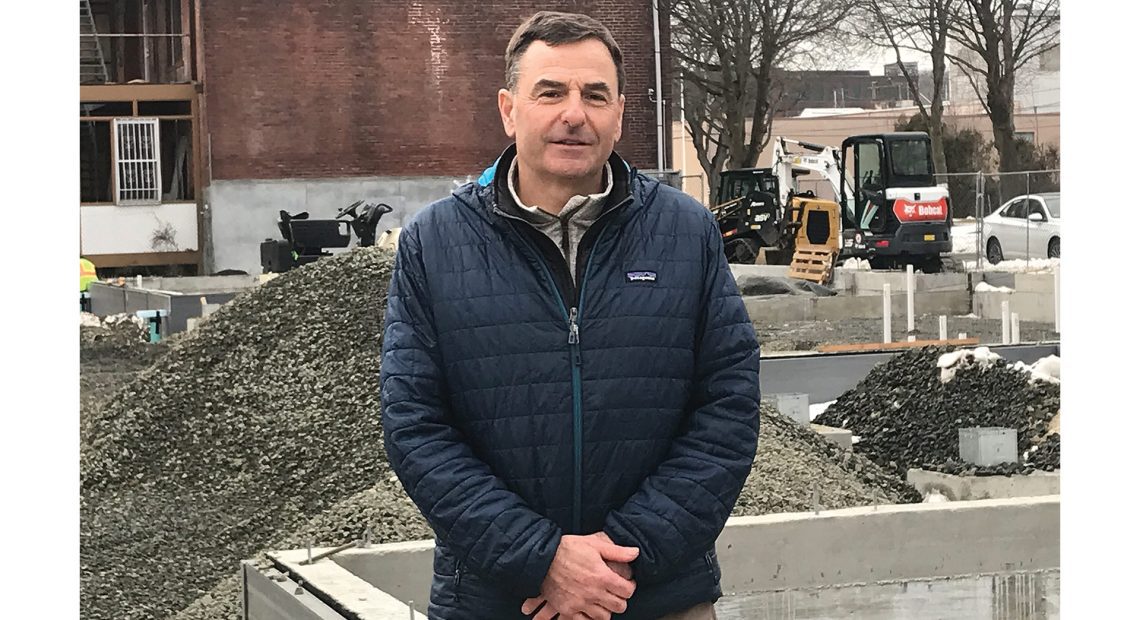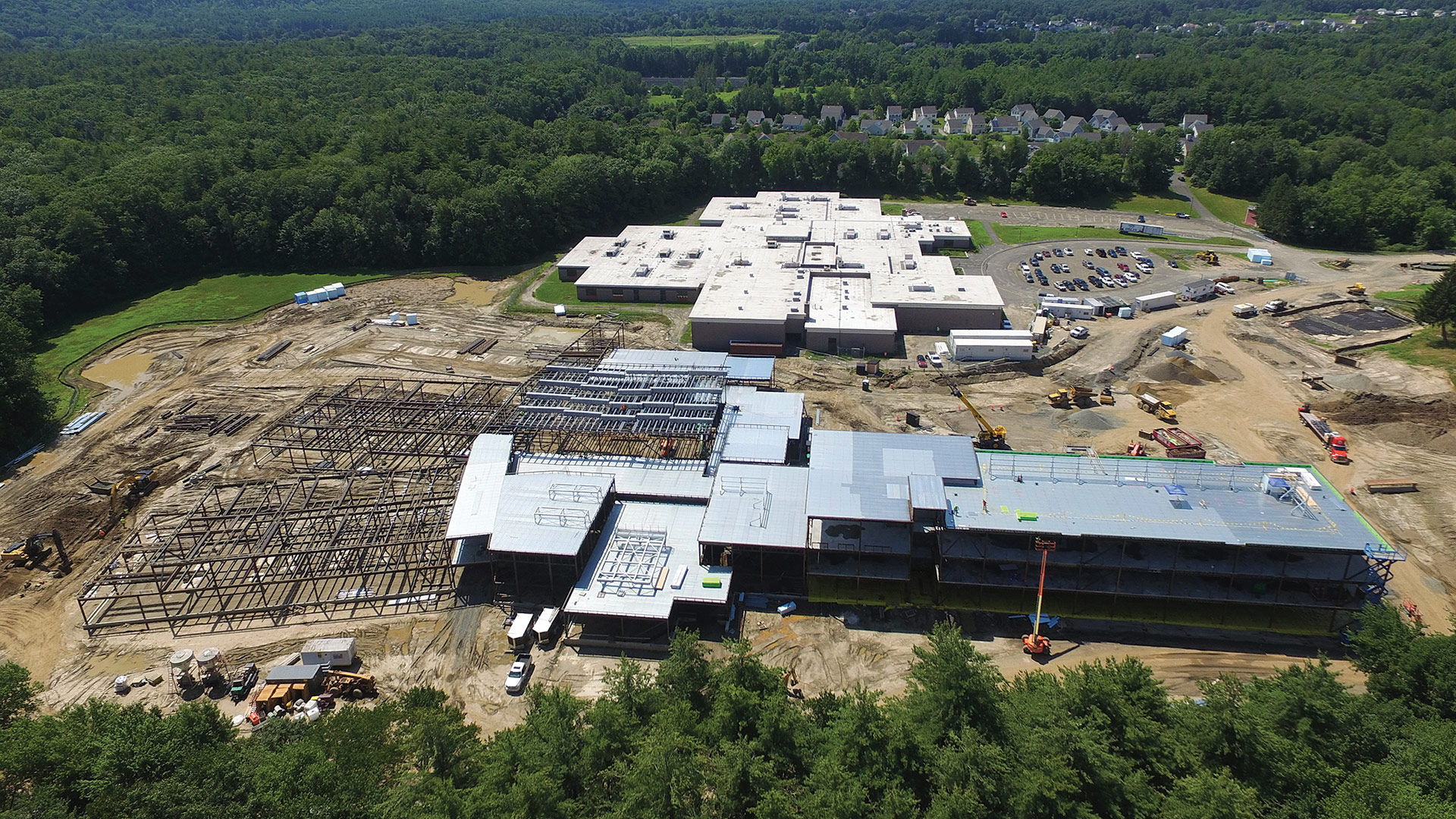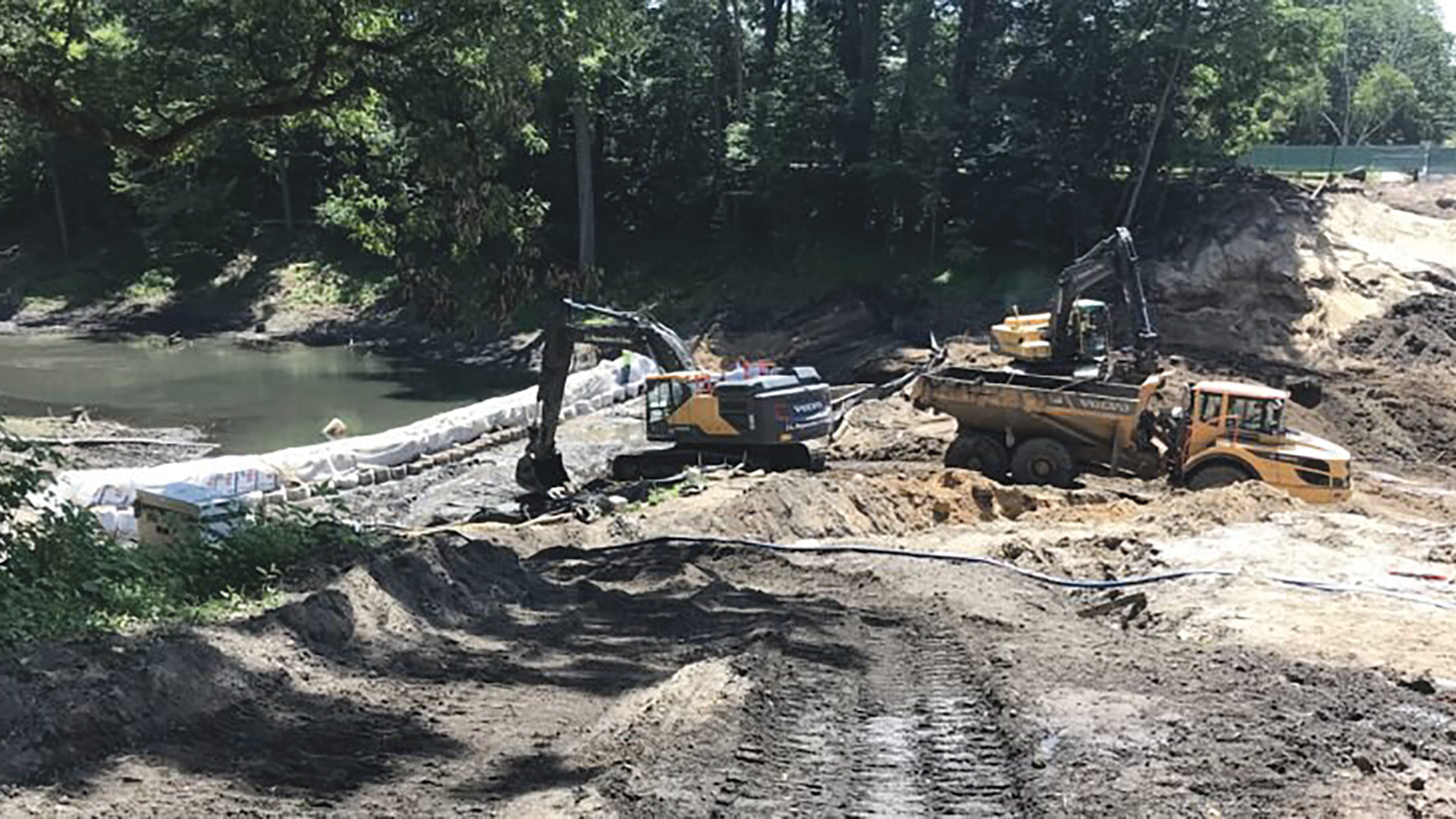A Big Supply of Challenges
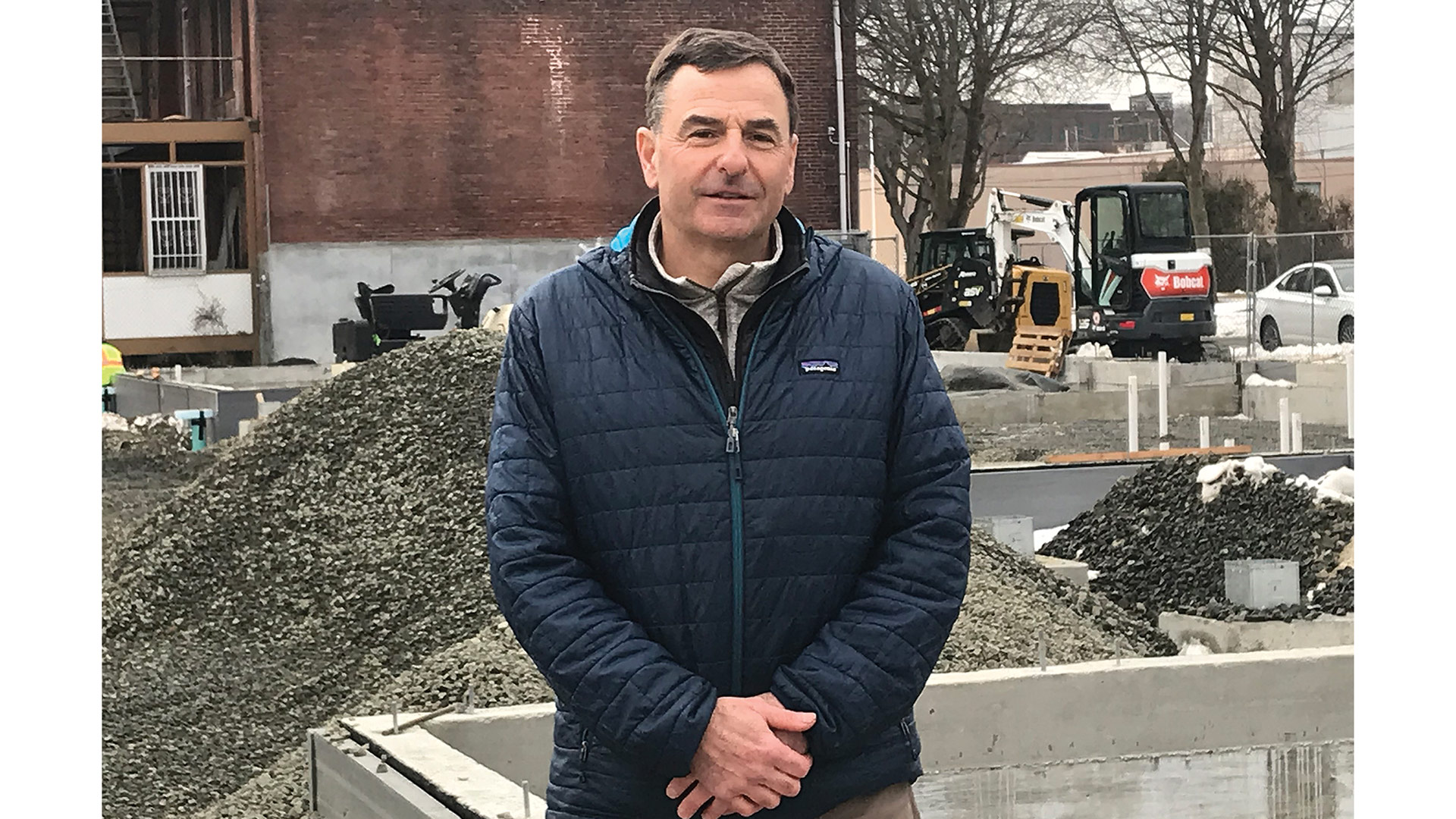
Christoper Burger, president of Inglewood Development, on site at a 12-unit apartment-complex project for the Holyoke Housing Authority.
How do you plan a construction project when you don’t know if all the supplies will be available, and even if all the workers will be ready to go — and stay healthy? Very carefully, said contractors who spoke with BusinessWest about the uncertainties of the construction trade these days. Demand and workflow are solid, they say — but the supply-chain and workforce challenges of the pandemic era continue to inject an element of frustration into many projects.
By Mark Morris
As the national economy continues to improve, local construction managers are telling BusinessWest they have plenty of work and a solid pipeline of projects for the immediate future.
That’s the good news.
The bad news, and there’s a good amount of it, comes in the form of a growing number of challenges, but especially supply-chain issues, inflation, and workforce matters, all of which are seeing varying degrees of improvement but nothing that is dramatic in nature.
Together, these factors make it difficult to make intelligent bids and do what every contractor wants to do — bring in a project on time and on budget.
“Everyone is tired of hearing about issues with the supply chain, but it’s a real thing,” said Christopher Burger, president of Inglewood Development in Longmeadow, noting that these issues stem from a variety of factors, everything from production challenges to problems getting materials shipped and then distributed to suppliers, to growing demand as the economy rebounds from the pandemic.
And they are prompting a wide array of colorful analogies — from hitting a moving target to shopping in a grocery store, COVID-style.
In addition to longer delays in securing needed materials, Burger said, even when materials are available, there are still glitches. As an example, an architectural roofing shingle manufacturer usually offers about a dozen colors of their product. After one of his customers made their selection, Berger had to tell the customer to pick another color from one of the three colors the company currently offers.
Trying to keep up with what’s available and what isn’t is like hitting a moving target, according to Carl Mercieri, vice president of South Hadley-based Marois Construction.
“Lumber is more available than it was six months ago, and while the price is still high, it’s leveled off for now,” he said. “On the other hand, rigid insulation is hard to get right now.”
Kevin Perrier, president of Five Star Building Corp. in Easthampton, said everyone in this sector is feeling the impact of COVID on finding available products. He compared purchasing construction materials to what shoppers are finding at the grocery store.
Kevin Perrier
“You walk in one day, and for some reason there is no pasta on the shelf; the next week, you go in, and maybe the cereal aisle is empty — it’s the same in this business.”
“You walk in one day, and for some reason there is no pasta on the shelf; the next week, you go in, and maybe the cereal aisle is empty — it’s the same in this business,” he said, noting that there is a similar hit-or-miss quality and inability to product availability that only increases the frustration level.
Indeed, Mercieri noted that, while lumber is available right now, that luxury (and, yes, it can be called that) may well be short lived. The recent protests among Canadian truckers over vaccine mandates may soon cause a shortage of lumber coming to the U.S. from Canada, he said.
After running his company for 22 years, Perrier said he could not have imagined the problems he has experienced with building materials over the past two years.
“There have always been long lead times for certain products, but generally most materials were readily available,” he explained. “This is a new experience, where lead times are no longer predictable, and some of the most common building materials are now delayed by weeks and months.”
For this issue and its focus on construction, BusinessWest takes an in-depth look at how several issues, most all of them COVID-related, are making this a good time, but also a very challenging time, for area contractors.
‘Lumber’ Curve
As he talked about supply-chain issues — and how the unavailability of needed materials is causing no end of frustration in his sector — Perrier noted that his crew had to install FRP interior wall paneling for a recent project. The adhesive used to secure the panels — easily available everywhere before the pandemic — was nowhere to be found when they needed it.
“We searched the whole country, multiple suppliers. We were told it would be 16 to 20 weeks before we could get the adhesive,” he said, with discernable exasperation in his voice.
Burger said products like overhead garage doors can have wait times of up to 14 months. Mercieri concurred, noting that his company was trying to finish a project for Yankee Candle, but the overhead doors caused a delay. “We had ordered the doors in May, and we just installed them in January.”
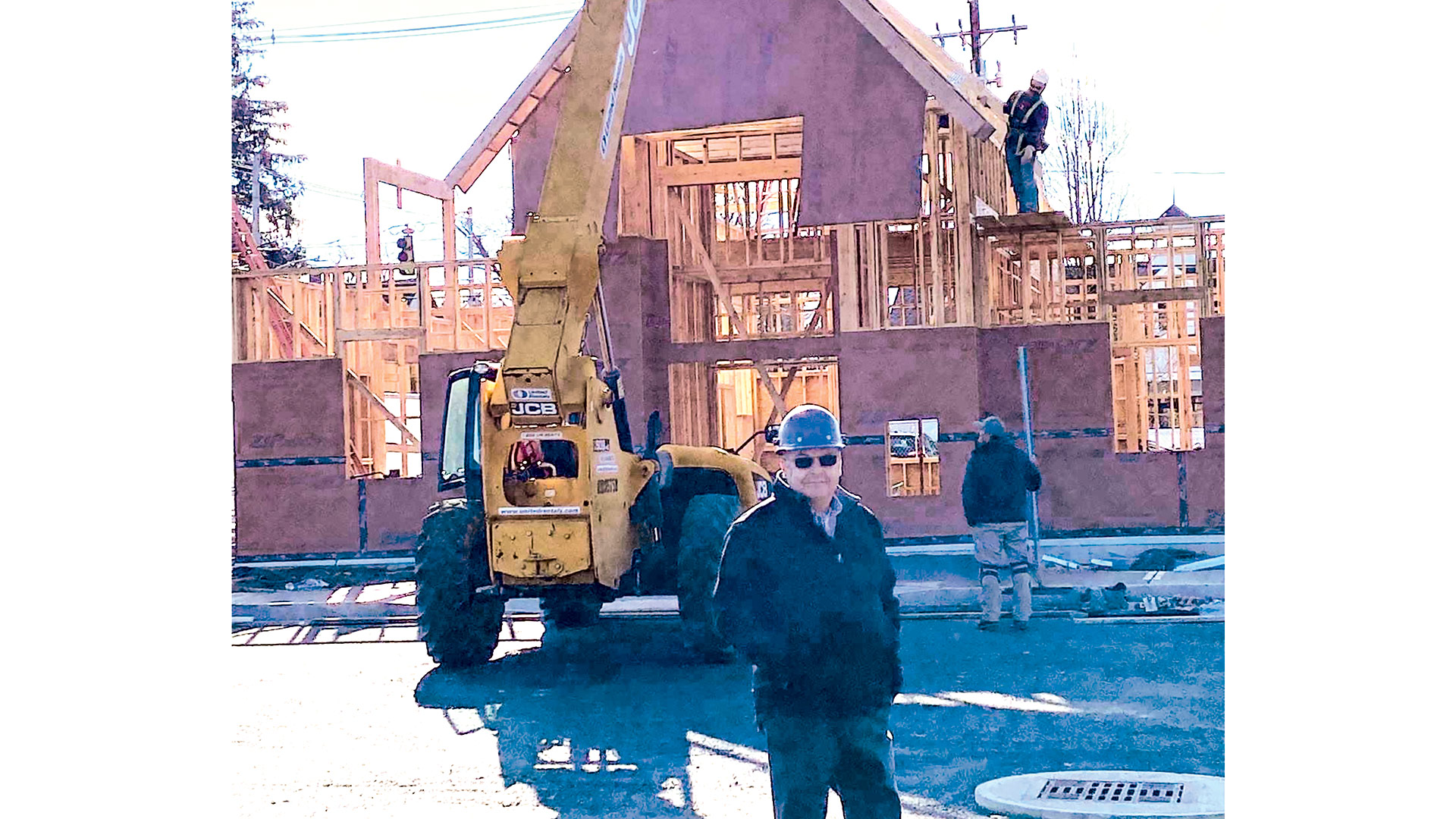
Carl Mercieri says hiring remains a challenge, as few applicants have the experience the job requires.
A market environment of scarcity and price hikes also invites unethical practices. Perrier said he knows of subcontractors who have been approached by suppliers offering to reduce wait times if they are willing to pay more for the product. “If a product had a 40-week wait time, they could get it in 20 weeks if they were willing to pay 20% more for it.”
Situations like this beg the question, how does a contractor bid on a project and see it through completion with so many variables? The contractors who spoke with BusinessWest said they add in extra time for each job and keep a conversation going with their clients, most of whom are understanding of the times everyone is in and the challenges they present.
Open communication is key because it’s a given that timetables and prices will change during the project.
“When we need relief on the cost of material increases, we do what all good contractors do,” Mercieri said. “We open our books and show our client the original price from the vendor against the current price.”
While access to materials can be unpredictable, stockpiling them when available isn’t a feasible option, according to Perrier, because that would require large amounts of storage space that most contractors simply don’t have. Also, a big investment in materials today might become a losing proposition once supply catches up with already-considerable demand and prices move even slightly downward.
“There have always been long lead times for certain products, but generally most materials were readily available. This is a new experience, where lead times are no longer predictable, and some of the most common building materials are now delayed by weeks and months.”
As general contractors, Burger, Mercieri, and Perrier all remarked they are fortunate to have a core group of longtime employees. Problems arise, they said, as new projects get scheduled and they want to add new people, because, here again, there is ample demand but inadequate supply.
“As many ads as we run looking for workers, we don’t get much response,” Mercieri said. “Out of the 50 or 60 applications we receive, maybe one person has the experience we’re looking for.”
Subcontractors who do the plumbing, electrical, and other work on a building project have their own labor shortages that become even more pronounced when COVID strikes. By working as a team, subcontractors can be vulnerable to the easily transmissible virus, and one worker with a positive test can force the whole group into COVID protocols, causing another delay to a project.
“We’ve had jobsites where the subcontractor had COVID issues among their workers,” Burger said. “Out of precaution, they can’t show up for 2 or 3 days, at best, so that certainly hurts your schedule.”
Despite all the challenges, the three contractors have an optimistic outlook for the rest of this year and into 2023. They all have a mix of public and private projects, with some jobs bringing real satisfaction. Mercieri’s company is wrapping up a renovation project for the Mullins Center at UMass, and Burger discussed a building expansion nearing completion for Jewish Family Services in Springfield.
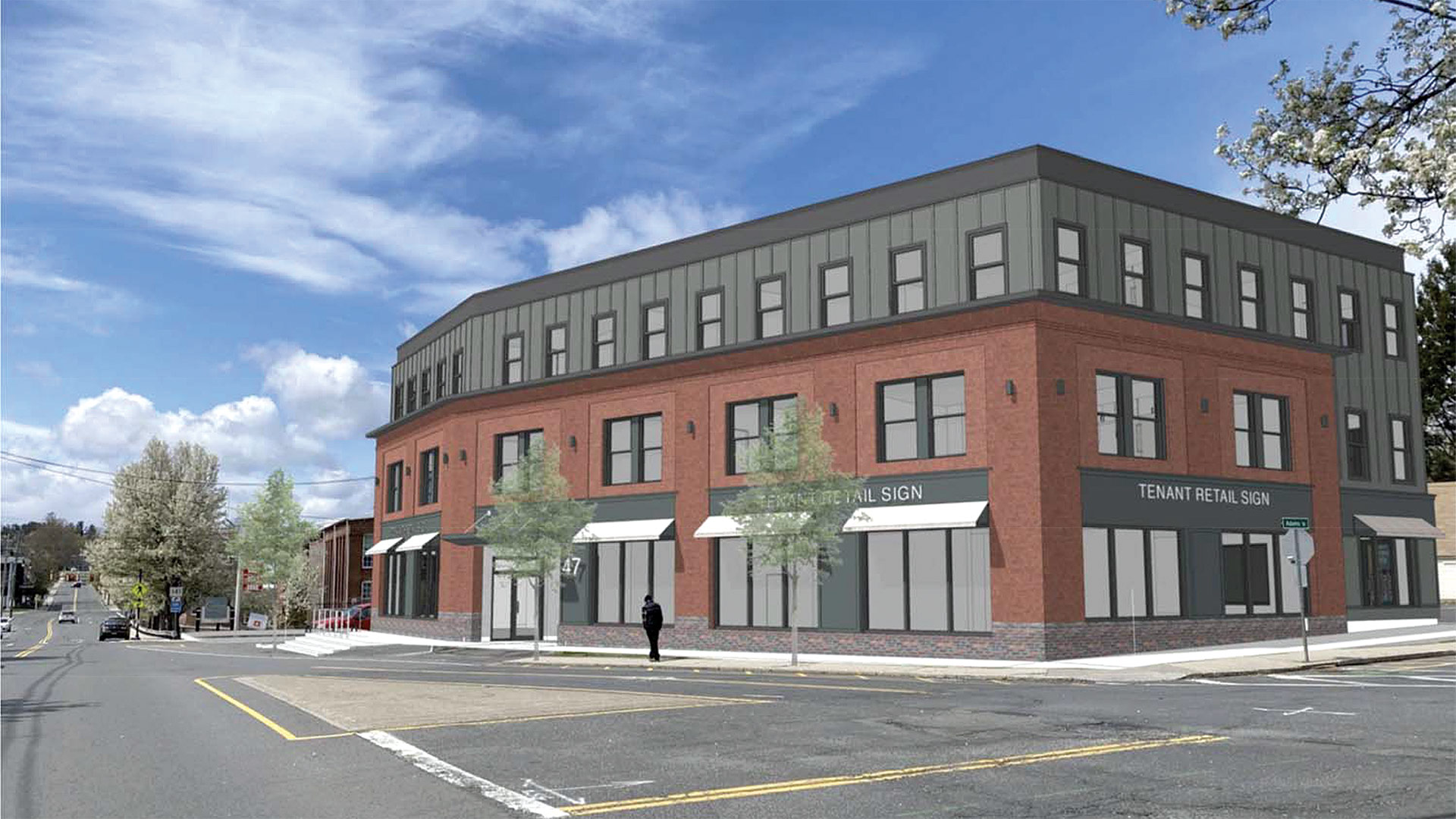
A rendering of the apartment complex Kevin Perrier says will change the facade of downtown Easthampton.
“They’re expanding their facility to accommodate Afghan refugees who will be coming in,” Burger said. “That was a nice project to work on, and we’re glad to be part of it.”
As an Easthampton native whose business is located there, Perrier admitted he has a soft spot for his hometown. One recent project involved his company designing and building a 30-unit apartment complex in downtown Easthampton at the corner of Cottage and Adams streets.
“Anything we can do to improve downtown means a lot to me,” he said. “That building will change the façade for downtown Easthampton.”
When BusinessWest caught up with Burger, his crew was in the early stages of building a 12-unit apartment complex for the Holyoke Housing Authority on South East Street. He said working with familiar clients like the Housing Authority makes it easier to get jobs done during these uncertain times.
“Repeat business is great because we all understand each other,” he said, also pointing to upcoming projects for longtime client Hot Table restaurants. In addition to just opening one in West Hartford, he is excited about working on new Hot Table locations planned for Westfield and Chicopee.
The aviation industry makes up a big part of Perrier’s business, with Delta airlines as a significant client. He is pleased to see things start to improve for the airlines. “From the second quarter of this year into 2023, we will be doing a massive amount of work at Logan and other New England airports for Delta.”
He also appreciates working with clients who understand the current climate and are moving ahead with their projects despite supply and labor challenges.
Nailing It Down
Perhaps the most frustrating thing about the current pricing, supply-chain, and workforce issues is the unpredictability surrounding them and an inability to project when or even if matters will improve, said those we spoke with.
In that respect, the construction industry is like every other business sector.
“Product shortages and price hikes are not unique to us or our industry,” Perrier said. “Most folks are experiencing them at the grocery store or just trying to find car parts.”
This shared pain doesn’t make the situation any more tolerable, said Perrier and others, adding that all they can really do is hope the economy continues to improve, the pandemic continues to recede, and the current ‘new norm’ will revert to a pre-pandemic norm.
In the meantime, life for contractors will continue to be like a trip to the grocery store. They just don’t know what will be on the shelves and when.



